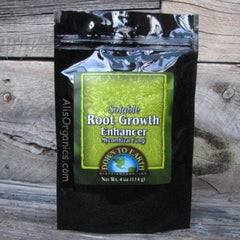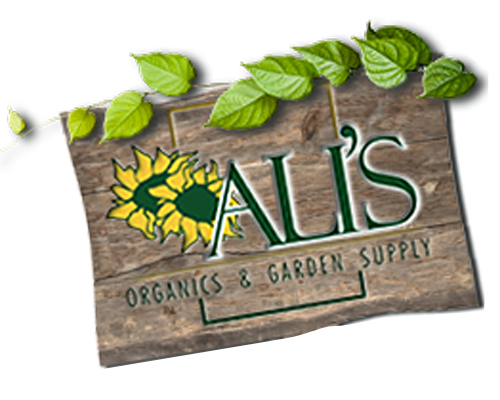What is mycorrhizae fungi?
Posted November 24, 2012

"Mycor" - "rhiza" literally means "fungus" - "root" and defines the mutually beneficial relationship between the plant and root fungus. These specialized fungi colonize plant roots and extend far into the soil resource. Mycorrhizal fungal filaments in the soil are truly extensions of root systems and more effective in nutrient and water absorption than the roots themselves. More than 90 percent of plant species form a symbiotic arrangement with the beneficial soil fungi (Mycorrhizal fungi).
What do they do for plants?
These Mycorrhizal fungi increase the surface absorbing area of roots 10 to 1,000 times, thereby greatly improving the ability of the plants to use the soil resource. Estimates of amounts of mycorrhizal filaments present in soil associated with plants are astonishing. Several miles of fungal filaments can be present in less than a thimbleful of soil. But mycorrhizal fungi increase nutrient uptake not only by increasing the surface absorbing area of roots.
Mycorrhizal fungi release powerful enzymes into the soil that dissolve hard-to-capture nutrients, such as phosphorus, iron and other "tightly bound" soil nutrients. This extraction process is particularly important in plant nutrition and explains why non-mycorrhizal plants require high levels of fertility to maintain their health. Mycorrhizal fungi form an intricate web that captures and assimilates nutrients, conserving the nutrient capital in soils.
What other functions do Mycorrhizal fungi perform?
Mycorrhizal fungi are involved with a wide variety of activities that benefit plant establishment and growth. The same extensive network of fungal filaments important to nutrient uptake is also important in water uptake and storage. In non-irregated conditions, mycorrhizal plants are under far less drought stress compared to non-mycorrhizal plants. Suppression of diseases and pathogens are additional benefits for a mycorrhizal plant. Mycorrhizae fungi attack pathogen or disease organisms entering the root zone.
Mycorrhizal fungi also improve soil structure. Mycorrhizal filaments also produce humic compounds and organic "glues" (extra cellular polysaccharides) that bind soils into aggregates and improve soil porosity. Soil porosity and soil structure positively influence the growth of plants by promoting aeration, water movement into soil and root growth and distribution.
Many practical benefits can be expected from using Mycorrhizal fungi in common practices. These include improved survival, growth, more rooting, flowering and fruiting, protection against disease, improved soil structure and resistance to invasion by non-mycorrhizal or exotic plant species.
Can I fertilize instead?
Many synthetic fertilizer (chemical) regimens push top growth at the expense of root development, making plants vulnerable to stressful environments. Frequent, high levels of synthetic fertilizer produce an unbalanced and often unsustainable shoot-to-root ratio. Mycorrhizae on the other hand, feed your plants and stimulate root growth. Unlike Mycorrhizae, fertilizers cannot help prevent root disease, improve soil structure or promote other beneficial microbes. Synthetic fertilizers can lead to other side effects, such as deterioration of water quality, soil structure and excess soil salinity. The Mycorrhizal relationship improves feeder-root production, and a mycorrhizal plant can better utilize added fertilizer (preferably organic).



Comments (2 Comments)
Mycorrhizael fungi dies if used as a foliar spray. Micronized, it can be mixed with water, but only as a soil soak. There are countless strains of mycorrhizae but they are broken up into two main categories (endo and ecto). There is a list of common plants here: http://www.mycorrhizae.com/mycocyclopedia/
Using ferts that are extremely high in N-P-K (either of the 3) can destroy the colony. I’ve had great luck bringing back trees that seemed completely dead by drilling holes near the base of the plant and watering in a powdered micronized endo/ecto blend.
Posted by Hugh on March 17, 2013
Thanks for the article. Can you mycorrhizae as a spray as well?
Posted by Cheryl on November 24, 2012
Post Comment